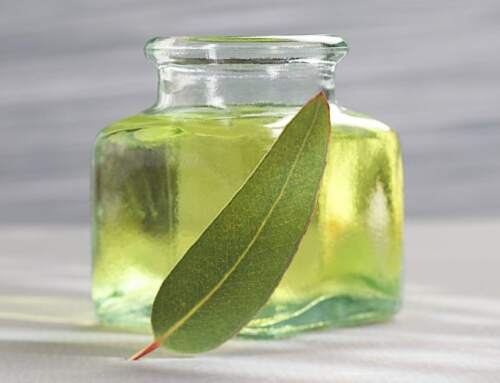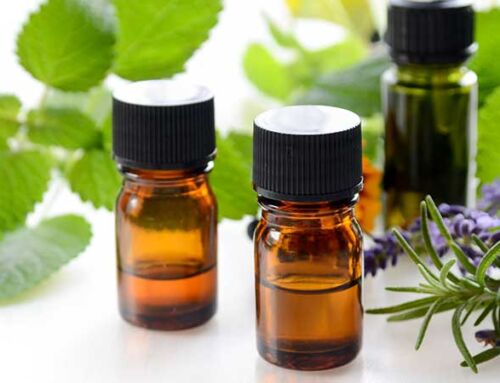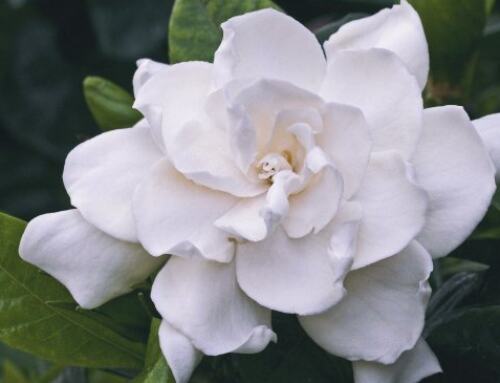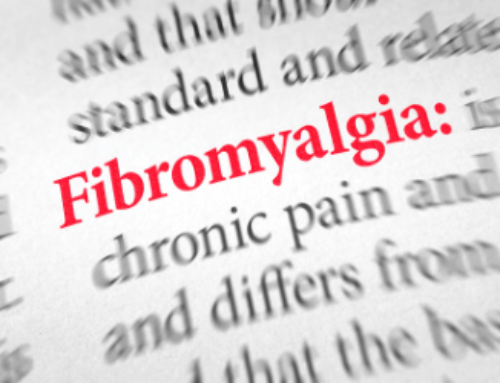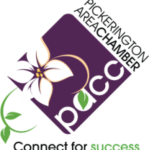What peppermint oil is
It’s the concentrated essential oil from the peppermint plant, rich in menthol. People use it three main ways: capsules (usually enteric-coated), inhalation, and diluted on the skin. Each route matters. The body reacts differently to each. NCCIH
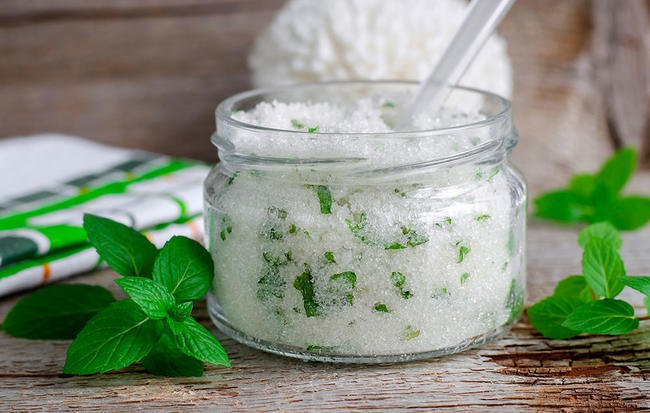
Where peppermint oil actually shines
1) Irritable Bowel Syndrome (IBS) relief
This is the strongest lane for peppermint. Multiple reviews and clinical guidance suggest enteric-coated capsules can calm global IBS symptoms and belly pain in adults. The enteric coating helps get past the stomach, which can cut down on reflux. If you’ve got IBS, this is worth asking your provider about. NCCIH+2PMC+2
How people typically use it: follow the product label or your clinician’s advice; many studies used capsules before meals for short stretches. Watch for heartburn. If it bugs your reflux, stop. NCCIH
2) Tension-type headaches (topical)
Rubbing a small amount of diluted peppermint oil on the temples and forehead can help some folks with tension headaches. Trials suggest a 10% peppermint solution performed better than placebo and landed in the same neighborhood as common OTC pain relievers. Again, dilute first. Keep away from eyes. PubMed+1
3) Nausea support in specific settings
Early research hints peppermint aromatherapy may ease nausea for people going through chemotherapy. It’s not a standalone treatment, but it may take the edge off for some. NCCIH
4) Exercise and alertness, maybe
Small studies link peppermint inhalation with a tiny bump in perceived energy and training effects. Useful? Possibly. Magic? No. Think gentle nudge, not rocket fuel. PMC
5) Mouth feel and breath
Peppermint and menthol can tingle and freshen. In labs, mint oils show activity against some oral bacteria. Real life is messier, and you still need floss, a brush, and your hygienist. If you try a mint-oil rinse, keep it diluted and occasional. PMC+2PMC+2
Safety notes you’ll be glad you read
Capsules: Enteric-coated versions are easier on the stomach but can still cause heartburn, nausea, or burping. If you have GERD, proceed carefully or skip. Talk to your clinician first if you take meds or have health conditions. Supplements aren’t FDA-approved like drugs, so brand quality matters. NCCIH
Topical: Always dilute in a carrier oil. Peppermint can irritate skin if used straight. Keep away from eyes and mucous membranes. Patch test first. NCCIH
Kids: Do not apply peppermint oil on or near the face of infants or young children. Menthol vapors can affect breathing. NCCIH
Pregnancy/breastfeeding: Food amounts are generally fine. Medicinal doses are less clear. If using topically while breastfeeding, apply after a feed and wipe off before the next. When in doubt, ask your provider. NCCIH
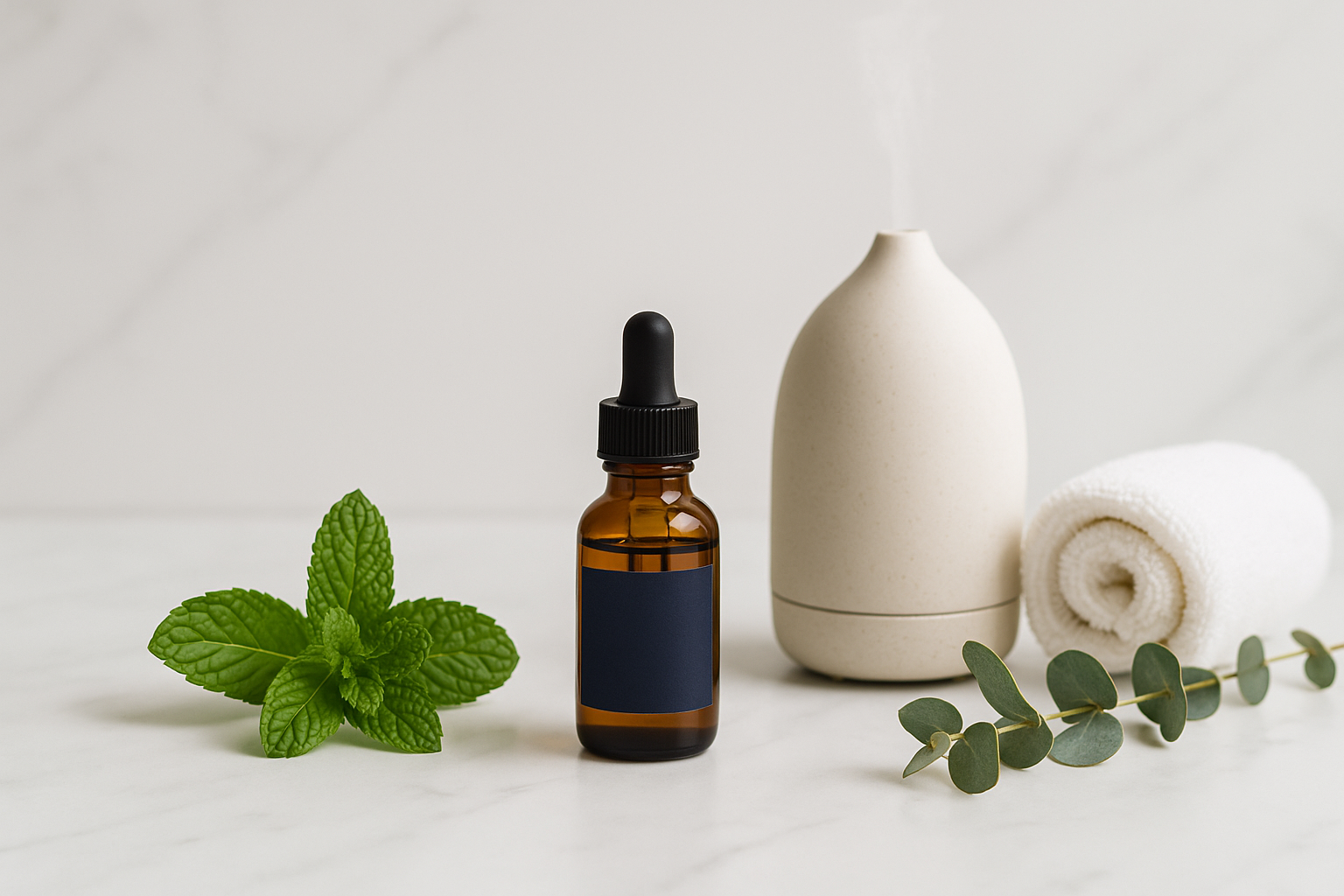
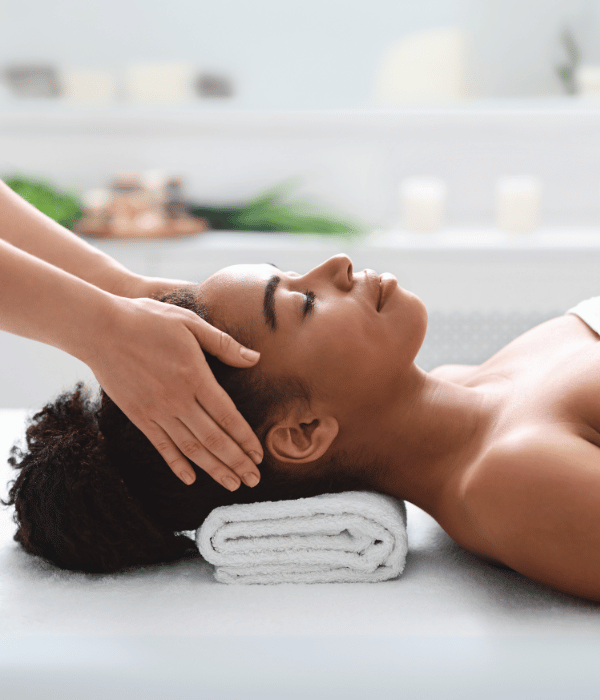
How we’d use peppermint at Body Ache Escape
Headache-friendly add-on: A dab of properly diluted peppermint at the temples and suboccipitals during a massage for tension-type headaches. Short, careful application. Avoid eyes.
Neck and shoulder reset: Pair light mentholated glide with myofascial work for that “cool, then relax” effect. It’s a sensation win, not a medical treatment.
If your main goal is IBS, talk to your clinician about enteric-coated capsules and timing with meals. We can support the stress-management side with massage, breathwork, and gentle sauna sessions as tolerated. We typically add a few drops of the essential oil of your choice into the massage cream that we use for your massage.
Quick how-to
Topical dilution: Start around 1% (about 1 drop peppermint per teaspoon of carrier). Sensitive skin? Go lower.
Temple application: Tiny amount, well diluted. Keep hands off eyes. Wash after.
Capsules: Look for enteric-coated peppermint oil. Follow label dosing or your clinician’s plan. Stop if you get reflux. NCCIH
Bottom line
Peppermint oil can be a helpful extra for two things we see a lot: IBS symptoms and tension-type headaches. Everything else sits in the “nice, maybe” bucket. Use it smart. Dilute it. And if your gut or head pain is running the show, get a proper plan in place and let peppermint play a supporting role.
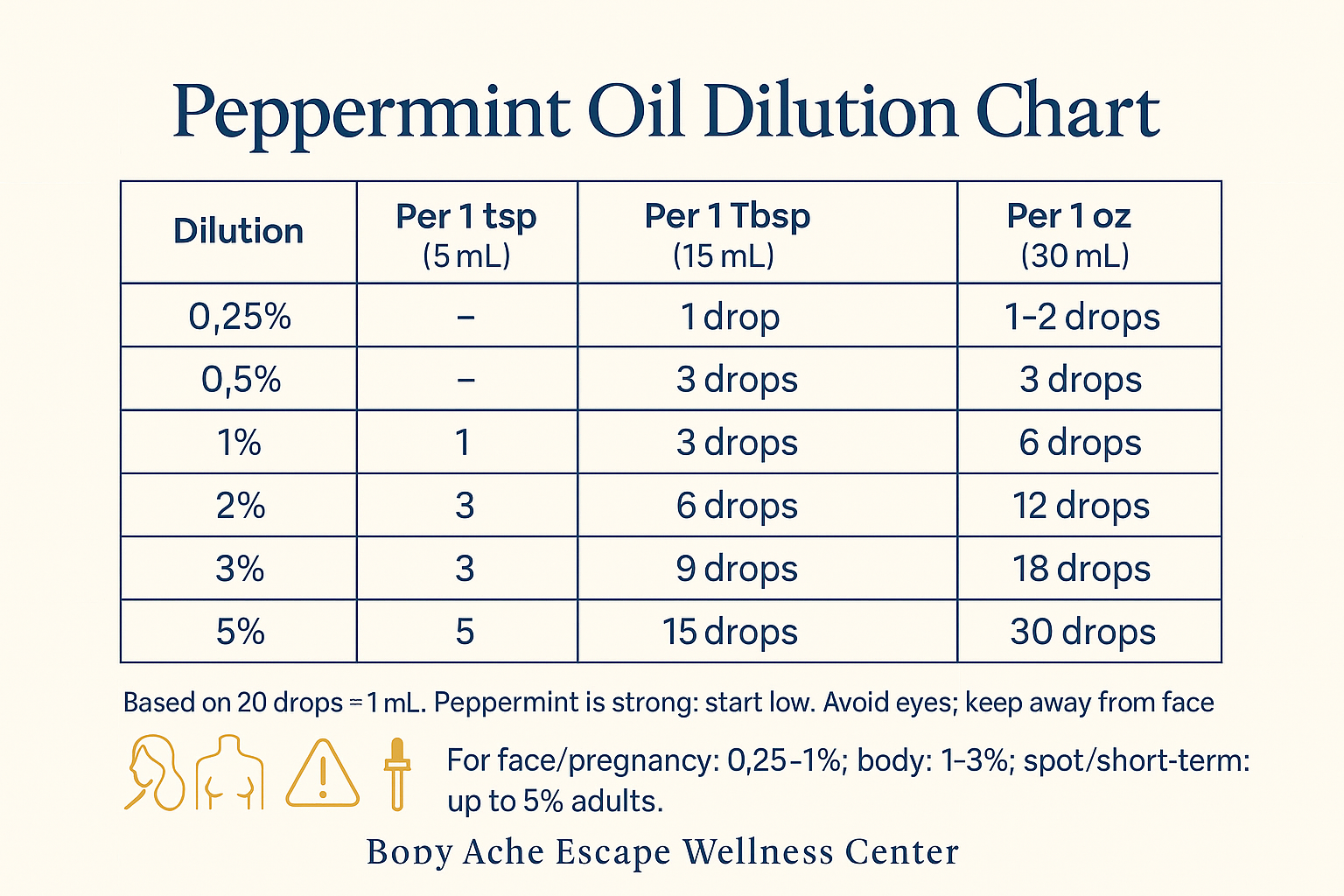
If you choose it, we might do a tiny, properly diluted temple application for tension headaches or a light peppermint-infused glide for neck and shoulder work. Always optional. Always diluted. Always away from eyes.
Cats and some dogs can be sensitive to essential oil vapors. Diffuse lightly in a well-ventilated space or avoid diffusing around pets entirely. Never apply oil to pets without a veterinarian’s guidance.
No. Higher does not equal better. With essential oils, the sweet spot is the lowest amount that gives the effect you want.
If you like, add one or two drops to a bowl of water placed safely away from heating elements. Never drip pure oil onto hot rocks or heaters. Some people find strong menthol overwhelming in heat, so keep it very light.
Skip neat application. Always dilute. Eyes, lips, and mucous membranes are no-go zones.
Keep tightly closed, in a cool dark place. Aim to use within 1 to 2 years. If it smells off or causes new irritation, toss it.
Apply your diluted blend to a small area inside the forearm. Wait 24 hours. If there is redness, stinging, or itching, do not use it.
Peppermint can interact with some meds through the liver’s CYP enzymes and can worsen reflux. If you take prescription meds, have gallbladder issues, a hiatal hernia, significant GERD, or you are pregnant, check with your clinician first.
Peppermint is higher in menthol and feels cooler and stronger. Spearmint is softer, often better tolerated on sensitive skin or for those who dislike intense cooling.
It can create a cooling, soothing feel during massage and may help you perceive less discomfort. Think sensory relief, not tissue repair. Hydration, movement, and recovery habits still matter.
It creates a cooling sensation that can feel more open, but it does not physically shrink swollen nasal tissue the way medical treatments can. Nice for comfort, not a cure.
Only if you want. At Body Ache Escape, aromatherapy is opt-in. If you are scent-sensitive, we skip it.
Yes, if you enjoy the scent and no one in the space is pregnant, very young, scent-sensitive, or has asthma that is triggered by aromas. Use 2 to 3 drops total in a diffuser for a short session. More is not better.
Do not apply on or near the face of infants or young children. Menthol vapors can affect breathing. For older kids, use extra-low dilutions and ask a pediatric clinician first.
Food-level exposure is generally fine. Therapeutic doses and strong topical use are less clear. If breastfeeding and using topically, apply after a feed and wipe off before the next. When in doubt, ask your provider.
No. Essential oils are highly concentrated and can irritate the mouth and stomach. For ingestion, only use properly formulated enteric-coated capsules and follow medical guidance.
It can. Menthol relaxes the lower esophageal sphincter, which may increase reflux in some people. If you have GERD, be cautious or skip internal use.
Enteric-coated peppermint capsules have decent evidence for reducing overall IBS symptoms and belly pain. Follow label directions or your clinician’s advice. If you notice heartburn or reflux, stop.
Jojoba, grapeseed, fractionated coconut, or sweet almond. Choose unscented, high-quality oils.
Start low.
Face: 0.5 to 1%
Body: 1 to 3%
That means 1% is about 1 drop of essential oil per teaspoon of carrier oil.
Dilute to about 10% if you are using a premade roll-on that is designed for temples, or stick with 1 to 3% if you are making your own blend. Dab a tiny amount on temples, forehead, and suboccipital area. Avoid eyes. Wash hands after.
It may take the edge off for some, but the research is stronger for tension headaches. If you get true migraines, talk to your clinician about a full plan and use peppermint as a small add-on.
Best evidence is for two things: easing IBS symptoms with enteric-coated capsules and soothing tension-type headaches when used topically in a proper dilution.
A concentrated essential oil from the peppermint plant, rich in menthol. People use it three ways: capsules, inhalation, and diluted on the skin. Each works a little differently in the body.

